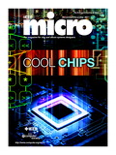
IEEE MICRO
Scope & Guideline
Elevating Innovation in Hardware and Software Architecture
Introduction
Aims and Scopes
- Microarchitecture Innovations:
The journal covers cutting-edge developments in microarchitecture, including novel processing techniques, memory hierarchies, and architectural design methodologies that enhance performance and efficiency. - Accelerator Technologies:
A significant focus is on hardware accelerators for specialized tasks, including AI, machine learning, and data processing, highlighting advancements in architectures such as FPGAs, GPUs, and custom ASICs. - System-Level Integration:
Research on integrating various components within computer systems, including memory management, interconnect technologies, and heterogeneous computing environments, is a core area of emphasis. - Energy Efficiency and Sustainability:
The journal promotes studies that address energy-efficient computing solutions and sustainable practices in hardware design, particularly in the context of large-scale data centers and edge computing. - Security and Privacy in Computing:
Research focusing on security vulnerabilities, privacy-preserving techniques, and hardware-based security mechanisms is increasingly relevant, reflecting the growing concerns in modern computing systems.
Trending and Emerging
- Artificial Intelligence and Machine Learning Accelerators:
A significant trend is the increasing focus on hardware designs specifically tailored for AI and machine learning workloads, including techniques for efficient inference and training. - Edge Computing and IoT Architectures:
Research addressing the unique challenges of edge computing and IoT, including low-power and efficient processing architectures, is on the rise, reflecting the growing importance of these applications. - Memory and Storage Innovations:
Emerging themes in memory technologies, including in-memory computing and novel memory architectures, are becoming central to discussions on improving performance and energy efficiency. - Heterogeneous Computing Systems:
There is a notable increase in research on heterogeneous computing systems that leverage a mix of processing units (CPUs, GPUs, FPGAs) to optimize performance for diverse workloads. - Quantum Computing and New Computing Paradigms:
The exploration of quantum computing and its integration with classical architectures is gaining attention, marking a shift towards future computing paradigms and their implications for microarchitecture.
Declining or Waning
- Classic Microprocessor Design:
There has been a noticeable reduction in publications focused solely on traditional microprocessor designs, as the field shifts towards more specialized and application-specific architectures. - Historical Perspectives on Microprocessors:
Research articles centered on retrospective analyses of microprocessor history and legacy systems are declining, suggesting a move towards more forward-looking and innovative research. - General-Purpose Computing:
The focus on general-purpose computing architectures is waning as researchers increasingly prioritize specialized computing solutions that cater to specific application domains such as AI and data analytics. - Low-Level Programming Techniques:
Studies emphasizing low-level programming techniques and optimizations are less frequent, possibly due to a shift towards higher-level abstractions and machine learning frameworks. - Legacy Systems and Compatibility Issues:
Research on legacy systems, including compatibility and integration issues with modern architectures, is declining, indicating a preference for exploring new technologies rather than maintaining older systems.
Similar Journals
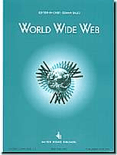
WORLD WIDE WEB-INTERNET AND WEB INFORMATION SYSTEMS
Pioneering Research in Internet TechnologiesWORLD WIDE WEB - INTERNET AND WEB INFORMATION SYSTEMS, published by Springer, is a leading academic journal that focuses on the cutting-edge areas of Internet technologies and web-based information systems. With an esteemed ISSN of 1386-145X and an E-ISSN of 1573-1413, this journal has been a significant contributor to the fields of Computer Networks and Communications, Hardware and Architecture, and Software since its inception in 1998. The journal consistently ranks in the Q1 category across these fields, reflecting its high impact and relevance, evidenced by its impressive Scopus rankings where it stands in the upper percentiles (79th for Computer Networks and Communications, 77th for Hardware and Architecture, and 75th for Software). Researchers, professionals, and students looking to stay at the forefront of web information systems will find a wealth of valuable resources and innovative research compellingly presented in this journal, available for publication until 2024.
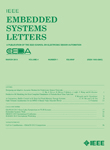
IEEE Embedded Systems Letters
Connecting Ideas, Inspiring Innovations in Embedded Systems.IEEE Embedded Systems Letters is a prominent scholarly journal dedicated to advancing the field of embedded systems engineering, published by the IEEE - Institute of Electrical and Electronics Engineers. Since its inception in 2009, this journal has become an essential resource for researchers, practitioners, and students, offering a platform for the dissemination of innovative research and technological advancements in embedded systems. With an esteemed Q2 ranking in both Computer Science (miscellaneous) and Control and Systems Engineering, it ranks within the top half of the field, reflecting its impact and relevance. The journal covers a wide array of topics, including hardware-software co-design, real-time systems, and system-on-chip architectures, making it an invaluable reference for those engaged in the development of cutting-edge technologies. Subscribers benefit from exclusive access to rigorously vetted articles, conference reports, and reviews, contributing to the vibrant dialogue within the embedded systems community. With its commitment to excellence, IEEE Embedded Systems Letters serves as a critical avenue for fostering collaboration and innovation in this rapidly evolving domain.
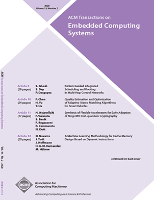
ACM Transactions on Embedded Computing Systems
Pioneering research that shapes the landscape of embedded systems.ACM Transactions on Embedded Computing Systems (ISSN: 1539-9087, E-ISSN: 1558-3465), published by the Association for Computing Machinery, is a premier academic journal dedicated to advancing the study and application of embedded computing systems. With a focus on both hardware and software aspects, this journal holds a distinguished Q2 ranking in its field (2023) and has achieved notable recognition within Scopus rankings, particularly in Hardware and Architecture (Rank #97/177) and Software (Rank #231/407). Encompassing research from 2002 to 2024, it serves as a crucial platform for disseminating cutting-edge findings that drive innovation and foster scholarly dialogue among researchers, professionals, and students alike. Although it does not offer open access options, the journal remains essential for those seeking to deepen their understanding of the complexities of embedded systems, contributing significantly to the growth of knowledge across disciplines.
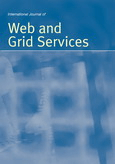
International Journal of Web and Grid Services
Advancing the frontiers of web and grid technologies.International Journal of Web and Grid Services, published by INDERSCIENCE ENTERPRISES LTD, is a distinguished platform for innovative research in the realms of Web Services, Grid Computing, and Distributed Systems. Established in 2005, the journal has consistently provided a forum for groundbreaking studies, catering to the evolving needs of academia and industry professionals alike. As of 2023, it is positioned in the Q3 quartile in both Computer Networks and Communications and Software, showcasing a notable impact within the field. Researchers will find this journal instrumental in disseminating knowledge, driving advancements, and fostering collaboration in the rapidly changing technological landscape. Although it currently does not offer open access options, its commitment to high-quality peer-reviewed content ensures that it remains a vital resource for those seeking to stay at the forefront of web and grid services research. With an audience comprising both seasoned scholars and emerging professionals, the International Journal of Web and Grid Services continues to be pivotal in shaping ongoing discourse and innovation.

International Journal of Embedded Systems
Unveiling the Synergy of Software and HardwareInternational Journal of Embedded Systems, published by INDERSCIENCE ENTERPRISES LTD, is a pivotal platform for researchers and professionals engaged in the dynamic fields of embedded systems, hardware, and software architecture. Established in 2005, this journal addresses the intricate interplay between software and hardware components in embedded system design and offers valuable insights into the latest advancements and methodologies. With its ISSN 1741-1068 and E-ISSN 1741-1076, it showcases rigorous peer-reviewed articles that contribute significantly to ongoing discourse and innovation in the field. Despite its current ranking in the Q4 category for both Hardware and Architecture and Software, the journal serves as a crucial resource for the development and enhancement of embedded technology. Researchers are encouraged to explore this journal to stay abreast of emerging trends and foster collaborations that advance knowledge in this complex domain. Note that the journal does not currently offer open access options, which may affect dissemination and accessibility for the wider academic community.
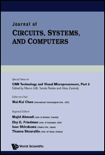
JOURNAL OF CIRCUITS SYSTEMS AND COMPUTERS
Connecting Researchers to the Future of Circuit DesignJOURNAL OF CIRCUITS SYSTEMS AND COMPUTERS is a pivotal publication in the fields of Electrical and Electronic Engineering as well as Hardware and Architecture, published by World Scientific Publishing Co. Pte Ltd in Singapore. With an ISSN of 0218-1266 and an E-ISSN of 1793-6454, this journal has contributed significantly to the discourse surrounding innovative research and technological advancements since its inception in the late 1990s. It currently holds a Q3 ranking in both relevant categories, reflecting its competitive stature and providing researchers, professionals, and students a substantial platform for disseminating findings. The journal covers a diverse range of topics, focusing on the design, analysis, and application of circuits, systems, and advanced computing technologies. Authors benefit from a rigorous peer-review process, ensuring high-quality publications that drive the field forward. The journal's commitment to excellence underscores its importance in fostering academic collaboration and knowledge exchange, making it a vital resource for anyone dedicated to advancing the domains of electrical engineering and computer science.

International Journal of Web Services Research
Fostering Collaboration in Web Services InnovationThe International Journal of Web Services Research, published by IGI Global, is a premier forum dedicated to advancing research and innovation in the field of web services. With an ISSN of 1545-7362 and an E-ISSN of 1546-5004, this journal has steadily contributed to the discourse on computer networks, information systems, and software development since its inception in 2004. Based in the United States, the journal publishes high-quality research articles that delve into cutting-edge web service technologies and methodologies, making it an invaluable resource for researchers, professionals, and students alike. Although categorized in the Q4 quartile in 2023 across several classifications, its growing impact and relevance are reflected in its ongoing engagement with contemporary issues in the web services landscape. As an academic platform, it aims to provide a comprehensive understanding of the dynamics of web services and their implications for future technological advancements. Researchers are encouraged to contribute their findings to foster knowledge sharing and collaboration within this vital domain.

International Journal of Distributed Systems and Technologies
Unveiling Insights into the World of Distributed Technologies.Welcome to the International Journal of Distributed Systems and Technologies, a prominent academic platform published by IGI Global dedicated to advancing the field of distributed systems and technologies. With an ISSN of 1947-3532 and an E-ISSN of 1947-3540, this journal, established in 2010 and continuing through 2024, offers a unique venue for researchers, professionals, and students to disseminate their findings in the realms of computer networks, communications, hardware, and architecture. Despite its current placement in the Q4 quartile for both computer networks and communications and hardware and architecture categories in 2023, the journal is committed to fostering innovative solutions and interdisciplinary collaboration that can drive future advancements. Although not open access, contributions to this journal not only receive rigorous peer review but also have the potential to significantly impact the community, underscored by a focus on applicable research that addresses the emerging challenges in technology. As part of a rich repository, the journal invites you to explore its latest issues and join in shaping the future of distributed systems.
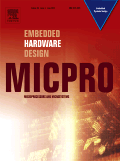
MICROPROCESSORS AND MICROSYSTEMS
Elevating the Discourse in Microsystems and AIMICROPROCESSORS AND MICROSYSTEMS, published by ELSEVIER, stands as a pivotal journal in the fields of microprocessor technology and microsystem design, with a focus on cutting-edge research that bridges artificial intelligence, computer networks, hardware architecture, and software development. With an ISSN of 0141-9331 and an E-ISSN of 1872-9436, the journal is recognized for its significant contributions to the academic community since its inception in 1978 and continues to shape the discourse leading into 2024. Its impact is evidenced by its Scopus rankings, placing it among the top quartiles in multiple disciplines, including Q3 in Artificial Intelligence and Q2 in Computer Networks and Communications. Although it does not offer open-access options, the journal remains a vital resource for researchers, professionals, and students seeking to delve into innovative developments and applications within the realms of microprocessors and embedded systems. The journal is headquartered in Amsterdam, Netherlands, and aims to foster dissemination and discussion of scholarly work that advances the understanding of practical and theoretical aspects of microprocessor and microsystem technologies.
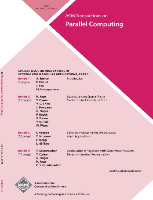
ACM Transactions on Parallel Computing
Advancing the Frontiers of Parallel ComputingACM Transactions on Parallel Computing (ISSN: 2329-4949; E-ISSN: 2329-4957), published by the Association for Computing Machinery, stands as a pivotal journal in the field of computer science, particularly focusing on the advancements in parallel and distributed computing. With its convergence years spanning from 2014 to 2024, this journal serves as a significant platform for disseminating cutting-edge research, methodologies, and technologies that shape the future of computational theory, hardware architectures, and effective software solutions. Although it currently holds a Q3 category ranking in various subfields including Computational Theory and Mathematics, and Modeling and Simulation, it continues to attract researchers aiming to contribute to its growing impact in the field. The journal's commitment to fostering knowledge exchange makes it an essential resource for professionals and students eager to navigate the complexities of parallel computing. As the field evolves, ACM Transactions on Parallel Computing remains a critical reference point for innovative research and professional development in computer science.